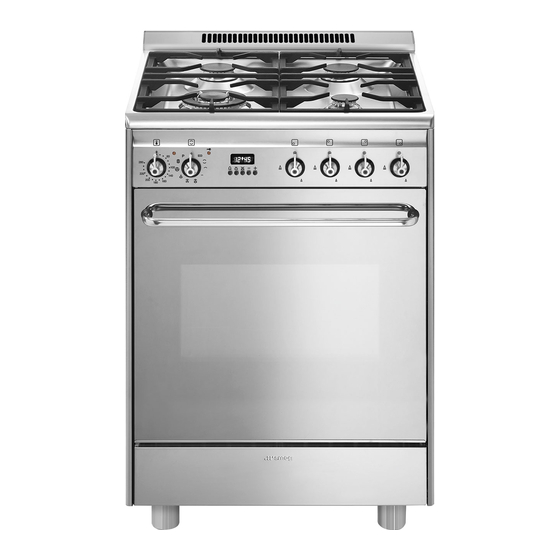
Table of Contents
Advertisement
1. INSTRUCTIONS FOR USE .................................................................................................. 40
2. SAFETY PRECAUTIONS ...................................................................................................... 42
3. ENVIRONMENTAL CARE .................................................................................................... 44
3.1 Our environmental care ................................................................................................................................ 44
3.2 Your environmental care ............................................................................................................................... 44
4. GET TO KNOW YOUR APPLIANCE ..................................................................................... 45
4.1 Description of the controls on the front panel ............................................................................................... 46
5. AVAILABLE ACCESSORIES ................................................................................................. 47
5.1 Using the reduction racks ............................................................................................................................. 47
5.2 Using the rack or tray .................................................................................................................................... 48
5.3 Using the support rack .................................................................................................................................. 48
5.4 Using the rotisserie rod (on some models only) ............................................................................................ 48
6. USE OF THE COOKING HOB ............................................................................................... 49
6.1 General warnings and advice ....................................................................................................................... 49
6.2 Lighting the hob burners ............................................................................................................................... 49
6.3 Practical hints for using the hob burners ....................................................................................................... 49
6.4 Pan diameters ............................................................................................................................................... 50
6.5 Glass lid (on some models only) ................................................................................................................... 50
7. USING THE OVEN ................................................................................................................ 51
7.1 Before using the appliance ........................................................................................................................... 51
7.2 Oven runners ................................................................................................................................................ 51
7.3 Storage compartment (on some models only) .............................................................................................. 51
7.4 Cooling fan system (on some models only) .................................................................................................. 51
7.5 Internal light .................................................................................................................................................. 51
7.6 Warnings and general advice for usage ....................................................................................................... 52
7.7 Electronic programmer .................................................................................................................................. 53
8. COOKING WITH THE OVEN ................................................................................................ 55
8.1 Cooking advice and instructions ................................................................................................................... 57
8.2 Cooking process information table ................................................................................................................ 58
9. CLEANING AND MAINTENANCE ......................................................................................... 59
9.1 Cleaning stainless steel ................................................................................................................................ 59
9.2 Ordinary daily cleaning ................................................................................................................................. 59
9.3 Food stains or residues ................................................................................................................................. 59
9.4 Cleaning the cooking hob parts .................................................................................................................... 59
9.5 Cleaning the oven ......................................................................................................................................... 61
9.6 Pyrolysis: automatic oven cleaning ............................................................................................................... 62
10. EXTRAORDINARY MAINTENANCE .................................................................................. 64
10.1 Replacing the light bulb ............................................................................................................................... 64
10.2 Removing the door ...................................................................................................................................... 64
10.3 Removing the door seal (not on pyrolitic models) ....................................................................................... 65
10.4 Removing the internal glass panels ............................................................................................................ 65
11. INSTALLATION .................................................................................................................. 66
11.1 Installing in kitchen units ............................................................................................................................ 66
11.2 Room ventilation and combustion extraction .............................................................................................. 67
11.3 Gas connection ........................................................................................................................................... 68
11.4 Electrical connection ................................................................................................................................... 70
11.5 Positioning the skirt (on some models only) ................................................................................................ 71
11.6 Positioning and levelling the appliance ....................................................................................................... 71
12. ADAPTATION TO DIFFERENT TYPES OF GAS .............................................................. 72
12.1 Replacement of nozzles on the hob ............................................................................................................ 72
12.2 Arrangement of burners .............................................................................................................................. 72
12.3 Burner and nozzle characteristics table ...................................................................................................... 73
12.4 Final operations .......................................................................................................................................... 74
IINSTRUCTIONS FOR THE USER: these instructions contain user recommendations, a
description of the controls and the correct procedures for cleaning and maintenance of the
appliance.
INSTRUCTIONS FOR THE INSTALLER: these are intended for the qualified technician who must
install the appliance, set it functioning and carry out an inspection test.
@
Further information about the products can be found at www.smeg.com
Contents
39
Advertisement
Table of Contents















Need help?
Do you have a question about the CP60X8 and is the answer not in the manual?
Questions and answers